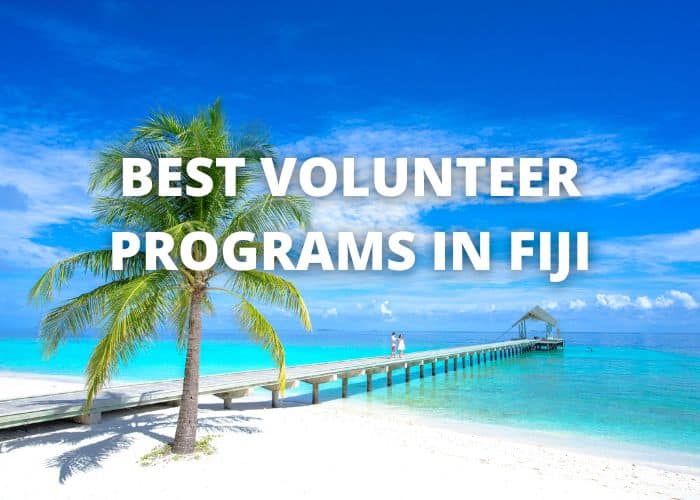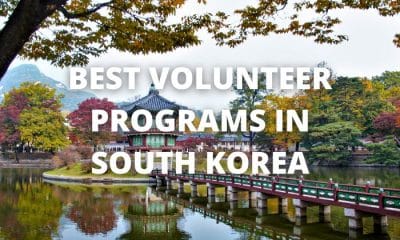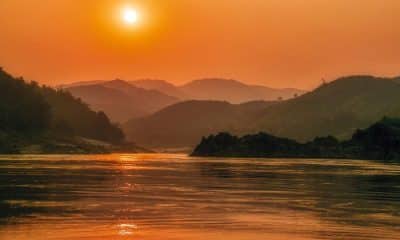Fiji
Best Beaches to Visit in Fiji
Fiji is an archipelago of more than 300 islands, famous for palm-lined beaches, clear lagoons, and coral reefs. The main island, Viti Levu, is home to most of the country’s population and the capital, Suva. In addition to pristine beaches, Viti Levu is also home to the Fiji Museum, which features ethnographic exhibits.

Castaway Island
If you want to unwind and relax, Castaway Island is a great option. This small island is covered in lush tropical forests and surrounded by turquoise water. It’s miles away from civilization but has many amenities including tennis courts and swimming pools. Visitors can also try their hand at scuba diving.
This private island is part of the Mamanuca Islands group and is located about 18 miles (30 kilometers) from the mainland of Fiji. To reach the island, take a regular high-speed ferry from Denarau Marina or Nadi Airport. You can stay in private thatched bungalows on the island.
The island is home to numerous palm-fringed beaches and live coral reefs. Whether you want to go snorkeling or diving, Castaway Island is one of the best beaches to visit in Fiji. It’s a great place for children and adults alike to relax and enjoy the sun.
Castaway Island is famous for diving, and has received the PADI International Five Star Gold Palm status. You can take a beginner’s course or learn more advanced techniques. Even children as young as eight can try scuba diving under the guidance of a certified instructor.
The island is home to two popular resorts, Royal Davui Resort and Beqa Lagoon. To get to the beach, you can either take a resort boat or take a local boat. Local boat transfers cost about FJ$40 per person, one way.
Natadola
Located in the west of the country, Natadola is one of Fiji’s best beaches. With its pristine water and soft, dark sand, this is a perfect spot for a dip or body surfing. This idyllic destination is also known for its tropical handicrafts.
This beautiful beach is just 30 minutes from Nadi International Airport. It has pristine coral reefs and is suitable for swimming at all tides. In addition to the perfect swimming conditions, it also has great snorkelling close to shore. The Intercontinental Fiji Golf Resort & Spa is the only five-star property on the beach.
In addition to the beautiful white sand, Musket Cove also has a unique atmosphere, with hammocks and a peaceful setting. It is also home to some of the best sunsets in the country. While there is not much snorkelling in the area, resorts run regular trips to nearby reefs and sandbars.
While the main islands of Fiji don’t have top-notch beaches, the smaller islands are home to many pristine ones. In fact, many of them have been featured in Hollywood blockbusters. There are literally hundreds of beaches in Fiji. You can’t miss them!
The ocean waters of Fiji are warm and azure, making for great diving. Nighttime spearfishing is another exciting activity. It’s also a good idea to stay away from low tide on the Long Beach on Kadavu Island because stingrays hide in the sand at low tide.
Blue Lagoon
There are countless ways to experience the Blue Lagoon, but the most scenic way is by seaplane. Turtle Airways offers scenic flights leaving from Nadi several times daily. The flights will take about 30 minutes. You will be able to take in the scenery and enjoy a delicious lunch while taking in the views.
The Blue Lagoon area is famous for its pristine beauty and is ringed by islands with soft rolling peaks. A beautiful stretch of white sand and crystal clear water is available for swimming and snorkeling. Visitors will also be able to enjoy the sunset while enjoying live music.
The azure water and coral reefs make it a great place for diving. You can also go nighttime spearfishing to try your luck at night. Just be careful not to swim at low tide, as you might find stingrays hiding in the sand.
If you have children, the Blue Lagoon Beach Resort has a kids club where they can enjoy activities like face painting, cooking lessons, snorkelling adventures, and nature walks. The resort also has babysitting services if you need someone to watch your children.
Devil’s Private Beach
This private island paradise is a 50-minute flight from the main island. If you’re looking for romance and luxury, this is the perfect spot. This tropical paradise is bordered by tropical jungle and crystal-blue waters. It’s also a perfect spot for water activities such as swimming and snorkeling.
This island is privately owned and only houses 14 couples at a time. There’s a private beach for each couple, and it leads directly into the clear blue waters of the Blue Lagoon. Its shallow water is perfect for viewing marine life, and the setting is ideal for a romantic picnic.
The beach can be accessed by boat, but you can also hike through Devil’s Bay Baths to get to it. If you are up to it, the hike will take about 30 minutes. Once you reach the beach, you’ll be rewarded with spectacular views of the island and the clear blue waters of the Blue Lagoon. It’s not the easiest place to access, so be prepared to climb rocks and crawl through grottos.
There’s plenty of entertainment on the beach at the end of the day. The staff puts on a show after dinner to entertain guests. One such show was “Fun Night” and featured full-throated country music.
Tokoriki Island
Tokoriki Island is home to some of the best beaches in Fiji. One of its most spectacular beaches is Liku Beach. This west-facing beach is renowned for its beautiful sunsets. The beach also has plenty of water sports to keep you occupied. If you are interested in snorkeling or scuba diving, then Liku Beach is the place for you.
The secluded, unspoiled Turtle Island is perfect for couples. Its rocky shores give it a private feel. Another beach that is perfect for couples is Honeymoon Beach. You can walk down the sand to find your own private oasis. The best beaches in Fiji are often the ones that feel private and secluded.
Tokoriki Island is a 35-km-long island located in the Mamanuca group, near Fiji’s international gateway, Nadi. It is the northernmost island in the group, bordering the Yasawa Islands. Unlike most resorts in the Mamanuca group, Tokoriki is a quieter destination.
If you’re looking for a relaxing vacation in Fiji, consider spending some time on the coral coast. The coral reefs and white sands on this island are truly spectacular. You can swim here any time of the day. You can also go horseback riding along the coast.
Fiji’s many beaches are world-renowned. The main island has just a few world-class beaches, but the smaller islands are teeming with paradise. Some of the country’s most popular beaches have even been featured in major Hollywood films.
Yasawa Island
The Yasawa Islands are a stunning group of islands located northwest of Viti Levu. They offer stunning natural beauty, postcard-perfect beaches, and hiking and diving opportunities. These islands have a population of less than a thousand people, and tourism is the largest source of employment in the area.
Yasawa Island is home to several Fijian villages. Visitors to the island can visit these villages and learn more about the island’s culture and way of life. When visiting the villages, it is important to wear a traditional T-shit and sulu. If you have time, you should also take part in communal kava ceremonies. You can book a private transfer from Denarau Port to Yasawa Island. Otherwise, you can take the Yasawa Flyer to reach the islands.
Yasawa Island is also known for its great scuba diving. There are numerous diving spots throughout the islands, including Barefoot Manta Island, where you can swim with Manta Rays. You can also find reef sharks, tropical fish, and more in the waters around Yasawa Island.
The Yasawa Islands are home to some of Fiji’s most beautiful beaches, which are ideal for families and couples alike. There are also many activities to do on the islands, including hiking and scenic lookouts. Visitors should pack plenty of water to keep themselves hydrated and cool. The Yasawa Islands also offer a wide variety of spas and traditional Fijian massages.
Fiji
Best Volunteer Programs in Fiji
Embark on an extraordinary voyage with Abroad Escape and seize the opportunity to make a profound difference in Fiji! Indulge in the adventure of a lifetime as you immerse yourself in the enchanting realm of Our esteemed volunteer programs…
Here you will find the best volunteer programs in Fiji. Fiji is a South Pacific island paradise with more than 300 islands. Its coral reefs attract scuba divers and up to 80,000 people visit it every month. If you’re interested in volunteering abroad, Fiji is a great place to start. You can learn about marine conservation, experience local culture, and make a difference while you’re there.
Embark on an extraordinary voyage with Abroad Escape and seize the opportunity to make a profound difference in Fiji! Indulge in the adventure of a lifetime as you immerse yourself in the enchanting realm of volunteering. Our esteemed volunteer programs in Fiji grant you the liberty to craft a customized itinerary, allowing you to partake in the most gratifying and influential projects in this magnificent destination.

Accommodation options in Fiji
There are several options when it comes to accommodation when you choose to participate in volunteer programs in Fiji. Volunteer programs in Fiji offer you the opportunity to live in a local community and still contribute to the environment. These programs allow you to get involved with local charities and other organizations. In return, these organizations often provide meals and accommodation for their volunteers.
Typically, volunteers will be staying in dormitories near their project sites. However, private rooms and home stays are available on request. Although living in an unfamiliar place can be intimidating, you can always seek out support from your recruiter and do your research on Fiji before applying. The recruitment officer will be able to discuss accommodation options with you in detail before you sign up for a program.
Volunteers should be aware of the culture in Fiji. The people are diverse, and follow a variety of religions. In addition to churches, Fiji has mosques, Hindu temples, and Sikh temples. Volunteers are welcome to participate in these events, although they should be mindful of the traditional clothing and behavior of the locals.
While Fiji is a popular tourist destination, there are also many rural communities that are less developed and have fewer resources. In these areas, there is less access to modern amenities and health care compared to the city. As a result, most volunteer programs in Fiji focus on educating local school children and community members.
The people of Fiji are friendly and welcoming. Fiji has long contributed to international peacekeeping efforts. Fijians served in the British army during both world wars and have since volunteered with the United Nations in Africa and the Middle East. Formerly a crown colony, Fiji achieved independence in 1970. Today, it is a member of the Commonwealth. The country’s economy is based on tourism and its natural resources. There are many fish, timber, and minerals available for export.
Fiji has many beautiful beaches and coral reefs, which is one of its greatest attractions. However, the corals are under threat from global warming and growing tourist numbers.
Volunteer opportunities in marine conservation
If you are passionate about marine wildlife, you should consider joining a volunteer project in Fiji. The Fiji Shark Conservation Project gives you the chance to work closely with endangered shark species. It is an ideal option for university students and people who want to experience a new culture. Volunteers in this program help monitor coral reefs and help fish species survive.
Fiji is a popular travel destination and offers volunteers a chance to explore its beautiful islands. Volunteering in Fiji will allow you to experience the tropical lifestyle while giving back to the local community. You can work alongside locals on marine conservation projects, save endangered species and help local schoolchildren. There is a wide range of Fiji volunteer opportunities available, and you can select the one that is best for you.
Volunteers stay in shared accommodation with other volunteers. They should be prepared to live in a simple home, and should not expect luxury living conditions. For example, some host homes do not even have hot water. Volunteers also have free weekends, and time to explore the country at their own pace.
Volunteers in Fiji can work on projects focused on mangroves and coral reefs. Volunteers in Fiji are welcome no matter what level of experience you have. Volunteers are provided with training and supervision by experts. Volunteers spend most of their time underwater, but can also participate in training sessions and alternative income projects.
Volunteers in Fiji can help protect coral reefs and help create Marine Protected Areas. They also help local organizations by collecting scientific data about marine life. Volunteers can also help to protect endangered species such as sharks and turtles. These projects are important because the corals are dying and the shark population is decreasing in Fiji.
Beyond Volunteerhas numerous volunteer programs in Fiji. Their programs are affordable and range from a week to a month. They provide 24-hour support and safety measures and can be completed during any season. They also provide you with a well-organized in-country experience.
Opportunity to experience local culture
Volunteer programs in Fiji offer volunteers the chance to work with local residents and learn about their culture. The island nation is made up of 332 islands that are surrounded by tropical waters and volcanic mountains. Its diverse landscape includes tropical rainforests, serene beaches, and coconut plantations. However, there are many challenges that Fijians face, such as limited educational opportunities and insufficient healthcare. Volunteers in Fiji can help improve the quality of life for these communities.
Volunteer programs in Fiji focus on education, community development, and the prevention of violence. Volunteers may also help protect the environment and improve local health. Volunteers can teach local schoolchildren about healthy living and healthcare and may help create a sustainable tourism industry. In addition, volunteers can help build schools, community buildings, and environmental protection projects.
Volunteers may work alongside locals to improve the quality of life in rural villages or assist with livestock. In many cases, volunteers work with local communities and develop lasting friendships with local people. While volunteering, volunteers also have the opportunity to learn about a local culture. This helps them bridge the cultural gap between a visitor and a host.
Fiji is a land of many beautiful islands. It is home to the first country in the world that experiences the sunrise every day. If you’re an avid do-gooder, Fiji is the ideal place for you. As a volunteer, you’ll get to experience Fiji’s rich culture and traditions.
While Fiji is widely understood by visitors from around the world, its native language is Fijian. Volunteers from abroad often experience some challenges while living and working in the island nation. Fortunately, the islanders are friendly and welcoming. It’s important to know your limits when traveling to Fiji, as many projects require more advanced skills and knowledge. Some volunteer projects may also require a criminal background check and health declaration.
While volunteering in Fiji, volunteers have the opportunity to help improve local economies. The program also helps build indigenous skills.
Ability to make a difference by volunteering in Fiji
There are many different types of volunteer projects available in Fiji. Some are more specialized than others, but many of them focus on sustainable community development initiatives. These initiatives include income generation, WASH, education enrichment, and environmental management. Volunteers working in these projects can experience the true impact of their work firsthand.
Fiji has both bustling urban centers and rural communities. The rural areas are typically less developed and offer less resources. They also tend to receive lower quality of health care than urban areas. Many of the volunteer programs in Fiji focus on educating local people and schoolchildren about health care.
Volunteering in Fiji is an excellent way to give back to the community and improve local health. Volunteers can teach children about health care and nutrition, and help create a more sustainable tourism industry. Volunteers can also participate in projects that promote conservation of the environment, such as building schools and community buildings.
If you are considering volunteering in Fiji, it is important to think about your expectations and what kind of project would be most appropriate for you. There are numerous areas in Fiji that need help, and finding the perfect project is essential to making the most impact. A website dedicated to volunteering in Fiji can give you all the information you need to choose a volunteer project that suits you.
Volunteers spend several months in their host communities, settling into local rhythms and taking part in daily activities. They also get to know the locals and develop relationships with them. Volunteers are also part of participatory activities that help them identify their village’s needs and development priorities. In addition, they often plan and facilitate community trainings.
Fiji
Best Time to Visit Fiji
The best time to visit Fiji is in May. This is when the weather is warmest and clearest. However, there are many other factors to consider when planning a trip to Fiji. You should also consider the Cyclone season and the school holidays. If you’re visiting during these times, prices may be higher.

May is the best time to visit Fiji
May is the start of the Fijian high season and the best time to visit the country. The tropical weather is ideal for snorkeling, diving and surfing. In May, temperatures are comfortable and humidity is low. There is also a good chance of seeing spectacular sunsets. The dry season also provides excellent conditions for scuba diving.
The temperature in Fiji is usually warm, averaging around 85 degrees. The humidity is low during this time of the year, so there is less risk of cyclones. However, unseasonal storms can occur. Because of this, travelers should make sure to buy flexible flight and accommodation, and be flexible in case weather conditions change.
May is also the best time to visit Fiji for its low prices. You can take advantage of low airfares and accommodations during this time, and expect high temperatures and clear skies. You’ll also find that the islands don’t have the crowds that are typical during the peak season.
The dry season is May to October. The weather is generally dry during this time, but you’ll still find some rain on some days. But this is not a bad time to visit Fiji if you want to avoid high humidity and long lines. And remember, this time of year is best for snorkeling and hiking.
Fiji is home to spectacular coral reefs. Visitors can snorkel and scuba-dive among hundreds of different species. The best months to dive in Fiji are from May to October. Also, remember that cyclones can disrupt your travel plans. Therefore, make sure you take your travel insurance with you and book flexible tickets.
The warm weather is ideal for snorkeling. You can enjoy the Great Astrolabe Reef, the world’s fourth largest barrier reef. Or you can head to the Somosomo Strait, a place that is known for its soft corals. There are also plenty of other opportunities for outdoor activities. The lush wilderness and beautiful beaches make Fiji an excellent destination for those who love to be in the water.
While it’s always best to avoid high humidity, Fiji’s temperatures are comfortable year-round. During the summer, the temperatures can reach up to 90 degrees Fahrenheit. Fortunately, temperatures are usually low enough at night.
Cyclone season
The best time to visit Fiji is between November and April. This is the wet season in Fiji and temperatures will be high, but there are very few cyclones. You can get a great deal on accommodations during this time as the country is less popular. Temperatures can rise to over 30 degrees Celsius during the day and stay in the 80s at night. The hottest month is January, which can be humid.
The dry season in Fiji lasts from May to October, and is popular with families and school children on vacation. The dry season offers minimal rainfall and good visibility for water sports. During the wet season, expect short bursts of rain, but the weather will be moderate and the number of tourists will be lower. Cyclone season is not the worst time to visit Fiji, and it’s also a popular time to visit Fiji if you are looking for a more cultural experience.
Depending on your preferences, the best time to visit Fiji will depend on the time of year you visit. The summer season is considered the peak travel season, but there are many other good times to travel to Fiji as well. However, you’ll want to avoid the rainy and humid winter season. It’s also best to avoid New Year’s Eve and Christmas, as these times are more expensive and crowded. After New Year’s Eve, hotels start dropping their prices and are more affordable than they were during these times.
September and August are also ideal months to travel to Fiji. The weather during this month is the best time for snorkeling and diving in Fiji, and you can watch manta rays during this time. And if you want to see the most manta rays, September is the month to visit.
The drier season in Fiji lasts from May to September. The most popular months are June and July, which are busy with Aussies and Kiwis. The drier months are ideal for swimming with humpback whales in Tonga or dolphins in Fiji. The rainy season in Papua New Guinea and the Solomon Islands starts in October and November. This time is also considered cyclone season in Fiji.
School holidays
If you’re looking for the cheapest Fiji holidays, then low season from late October to early November is the time to go. You’ll get to see Fiji at its most pristine and less-crowded, and accommodation is usually cheaper. You’ll also find the climate is always warm. However, avoid visiting during school holidays if you’re travelling with children, as this may cause the weather to become unsuitable.
In the wet season, from November to April, the weather can be a bit rainy and humid. However, storms are rare, and the rains are short. You can still enjoy the islands’ sunny skies. Festivals are also popular during this time, and can last for weeks or even a month. Popular festivals include the Coconut Tree Climbing Contest and the Lion Dance.
If you are traveling with children, February is a good time to visit Fiji. This is the best time to visit the islands’ waterfalls and swimming areas. Avoid March, which is the wettest month, as this is the cyclone season. In addition, flights to Fiji during this time are usually cheaper compared to high season, so you can get great deals if you book during this time.
Fiji’s weather varies considerably from day to day. Summer days are typically hot and humid, while cooler nights are perfect for beach vacations. Even though Fiji doesn’t have four distinct seasons, you’ll still have plenty of opportunities for sunbathing, swimming, and snorkeling – all without the hassle of air conditioning! And because the wet season isn’t as crowded, it’s the perfect time to explore the country’s culture and traditions.
The best time to visit Fiji during school holidays is when temperatures are at their lowest. In contrast, summer temperatures can be hot and humid, causing more rain and cyclones, so you’ll want to plan your trip accordingly. The best time to visit Fiji during school holidays will be when the weather is clear and the temperatures are in the low 30s.
In January and February, Hindus in Fiji celebrate Thaipusam and Panguni Uthiram, with piercings and meat hooks. The Hindus also celebrate Holi, which is a religious festival celebrated with colored powder. The festival takes place a few days after the full moon. During this time, the Fijian population also celebrates the festival of Diwali (the festival of lights), when Hindus decorate their houses and pray for wealth. Also during this time, they host the annual Uprising Festival, a 12-hour marathon of performing arts.
Peak season
While the island has a lot to offer year-round, June is a good time to visit Fiji for great diving and snorkelling conditions. The weather is warm and sunny with low rainfall. You’ll also find fewer people during this time. Also, you’ll find cheaper flights and accommodations. Plus, you’ll have less competition with other travelers for accommodations, attractions, and food.
Fiji’s wet season is the summer. It can bring 16 days of rain. But most of the time, the weather is warm and sunny. The rain is short-lived and seldom causes road flooding. Even though there’s less rain, the weather remains beautiful and sunny, and visitors can attend a variety of festivals during this time. These festivals last for several days or even a month and usually feature coconut tree climbing competitions. You can also take part in Chinese New Year celebrations during this time.
During the dry season, temperatures remain moderate. Temperatures during January reach up to 30 degrees Celsius and stay warm all day. However, the constant humidity can make the weather uncomfortable for some visitors. During this time, Europeans and North Americans visit Fiji to escape the cold weather of their homelands. Australians and New Zealanders also travel to Fiji during these months for their Christmas and New Year holidays.
The best time to visit Fiji depends on your preferences. July and August are the busiest months, with the highest demand during these months. The most affordable flights are offered during these times, but prices can be higher during the peak season. If you’re visiting Fiji during the peak season, you should try to avoid school holidays, because this is when most travelers come to Fiji.
Although Fiji has beautiful weather throughout the year, it’s still better to avoid the rainy season during this time. While the dry season is the most pleasant and least expensive, you may still experience rain. Be prepared for higher airfares and resort rates during this period. If you’re visiting Fiji during the peak season, it’s best to book your flight in advance.
Fiji’s dry season lasts from May to October. The temperatures are warm and humid during this time, but they rarely fall below 68 degrees Fahrenheit. There’s also plenty of sunshine. During this time, temperatures are ideal for most island activities.
Fiji
Best Places to Visit in Fiji
If you’re planning a Fiji trip, there are many places to see. Here are a few highlights: Singa Donka Dunes National Park, Snake God Cave, Nausori Highlands, and Natadola Beach. These destinations are great for families and anyone looking for a unique way to enjoy the South Pacific.

Singa Donka Dunes National Park
Located on the southwest corner of Viti Levu, the Sigatoka Sand Dunes are one of the most beautiful places to visit in Fiji. These dunes cover an area of 650 hectares and reach up to 60 meters high. The dunes are home to a variety of fauna and flora, including mahogany trees and a variety of plant species.
The park is home to rare species of birds and flora. The park is also home to the Fijian crested iguana, which is considered a threatened species. There are also a number of other animals, such as snakes, lizards, and frogs, on display. The park also features an extensive marine exhibit where visitors can hand-feed baby sea turtles.
Located on Viti Levu, Singa Donka Dunes National Park contains a vast area of gray-brown dunes. The dunes are influenced by coastal dunes and are largely covered with vines.
Snake God Cave
Snake God Cave is one of the most famous attractions in Fiji. It is located 23 km west of Korovou in the village of Wailotua. The cave has six snake-shaped stalactites, which give it its name. Ancient people used to visit this cave to make sacrifices to snake gods and test the fidelity of their partners. Today, visitors can visit the cave and the waterfall located nine km west of the cave.
The area is also home to a Tongan fort. This fabricated fort was once a stronghold for the Tongans. However, British forces forced the Tongans out of the fort in 1876. Today, visitors can visit the fort to see the preserved structure and descendants of its original inhabitants. A lookout point provides great photo opportunities.
The Fiji Museum is an excellent place to learn about the history and culture of the island. The museum also contains impressive artifacts, dating back almost three thousand years. You can also see the last double-hulled kayak in Fiji, the Ratu Finau. The museum also has a grim show about human flesh consumption.
Nausori Highlands
Nausori Highlands is a beautiful area that lies deep in the interior of the main island of Fiji, Viti Levu. It features some of the country’s most picturesque villages, including Navala, where you can get a real feel for Fijian culture.
The high peaks of the Nausori Highlands are visible from Nadi, and it is a short drive from the city to this area. The area is easily accessible from Nadi, and there are plenty of cheap hotels, hostels, and home stays in the area. Nadi is also home to some of Fiji’s best attractions, including the Hot Bread Kitchen, the local favorite Taste Fiji, and the Sri Siva Subramaniya Temple. For a cultural experience, you can also visit the National Museum in Nadi, which is located in Thurston Gardens, near the Government House. It is one of the oldest museums in the Pacific, and it has one of the largest collections of anthropological materials.
While Fiji is famous for relaxing vacations, you can also take part in some active adventures. You can take 4×4 tours to explore the jungle or take a trip to the Naihehe Caves, which have a fascinating history of cannibalism. Other activities you can enjoy include river rafting on the Upper Navua River. And don’t forget to visit the Sabeto hot springs, where you can bathe in thick mud and enjoy a relaxing massage.
Natadola Beach
One of the Best Places to Visit in Fiji is Natadola Beach, located about 10 kilometers from the capital, Suva. It is known for its beautiful scenery and a wide variety of activities. For those who like to be active, this is the perfect place. It is also a great place to practice water sports such as sea kayaking and paddle boarding. Other options include jet-skiing and surfing. If you want to be more adventurous, you can go for a tour that includes pick-up from your hotel and lunch.
Natadola Beach is considered one of the best beaches on Viti Levu. It is located along the coral coast, making it accessible no matter what time of day or tide it is. The beach is ideal for swimming, and there is a reef at either end for snorkeling.
Whether you want to take a stroll along the white sand beach or lounge on a hammock with a view of the lagoon, this is the best place to be. The white sand is soft and smooth, and the cobalt water is crystal clear. It is also one of the best places to go snorkelling.
Tavoro Falls
This waterfall is part of the Bouma National Heritage Park. It features a 50-metre drop and a plunge pool at the base. Surrounded by local farms, it’s an idyllic spot for swimming and exploring. You can also have a picnic lunch at the base of the waterfall.
If you want to get closer to nature, Fiji is the place to go. Visitors can hike the three-hour rainforest trails in and around Tavoro Falls. You can also try sea kayaking, zip-lining, and diving with sharks in the Beqa Lagoon. Other destinations to visit in Fiji include the less-populated Vanua Levu island. There are several waterfalls in this island and the Wasali Nature Reserve is a popular place for nature lovers.
Tavoro Falls, also known as Bouma Falls, are located in Bouma National Heritage Park. They are located in the eastern portion of Taveuni Island. You can explore the surrounding forest and see many species of Fijian flora and fauna. The falls have a picnic table and change area.
Levuka on Ovalau
Levuka on the island of Ovalau is a sleepy little town at the base of a beautiful volcanic island. This former colonial outpost is a UNESCO World Heritage site and home to an independent indigenous population. The town offers a variety of activities for visitors, including hiking and bird-watching. There are also a few decent restaurants and accommodations. It’s an ideal base from which to explore the rest of the island.
Levuka Town sits on the east coast of the island, while most of the sights are on the north coast. Visitors can visit the Bishop’s Tomb, which sits high on a bluff overlooking the sea. You can also visit St John’s College, which boasts twin towers. From here, you can continue your journey to the town of Cawaci, which is situated on an undulating hillside. There’s also a museum and a community centre where you can get more information about tours and other activities.
Levuka is one of the official ports of entry into Fiji, and its harbor is upgraded to accommodate foreign and local vessels. The harbor entrance is marked by a pile light. It also has a historical significance, as it was once the site of the Count Von Luckner’s capture during WWI. The town was also the site of a leper hospital in the past.
Nadi
Nadi offers a variety of restaurants and bars serving international and local fare. It also boasts a thriving Indian community. The food in Nadi is surprisingly affordable compared to other places in Fiji, and if you’re on a budget, there are several Indian restaurants in town that are worth checking out.
Nadi is a great base for exploring the surrounding islands. There are many day tours that include visits to Nadi’s temple and other attractions. You can easily reach the temple by car or seaplane within a 10 to 15-minute drive from the town. You can also take a day trip to the Yasawa Islands. These islands are home to some of Fiji’s most famous beaches, and offer plenty of opportunity for water sports and island-hopping.
Another excellent place to visit in Nadi is the Fiji Culture Village. While the town is relatively small, it is still a bustling center for travelers. You’ll find a range of souvenir shops and local cuisine here. Be prepared to haggle a little bit to get the best price for your purchases.
Suva
If you’re in the mood for a little culture, Suva is home to the Fiji Museum, located in Thurston Gardens. The museum is not high-tech, but it has a wealth of detailed information about the island’s history. There’s also a maritime exhibit and a display of huge replica boats and rafts. A small fee will get you a good look at the exhibits, and you can easily spend an hour or two here.
In addition to its museum, the city is home to the Sabto Mountains, which contain mud pools and natural thermal springs. Visitors can also relax in the onsite cafe, buy souvenirs from the gift shop, and watch pottery demonstrations. This is a great way to spend a few hours in this busy city.
In the early days, Suva was a backwater trading port, but with the growth of the island’s population and wealth, the city began to develop and grow. As a result, it developed an impressive colonial-style center. It even became a hub for diplomatic and commercial activities. It is also home to the headquarters of several regional organizations.
-

 South Korea3 years ago
South Korea3 years agoBest Volunteer Programs in South Korea
-

 Adventure Travel2 years ago
Adventure Travel2 years agoWhat Are the Challenges of Adventure Tourism?
-

 Volontariat à l'étranger3 years ago
Volontariat à l'étranger3 years agoVolontariat Thaïlande
-

 Freiwilligenarbeit im Ausland3 years ago
Freiwilligenarbeit im Ausland3 years agoFreiwilligenarbeit Thailand
-

 Vrijwilligerswerk3 years ago
Vrijwilligerswerk3 years agoVrijwilligerswerk Thailand
-

 Adventure Travel2 years ago
Adventure Travel2 years agoTypes of Adventure Tourism
-

 Freiwilligenarbeit im Ausland3 years ago
Freiwilligenarbeit im Ausland3 years agoFreiwilligenarbeit Laos
-

 Vrijwilligerswerk3 years ago
Vrijwilligerswerk3 years agoVrijwilligerswerk Laos






















